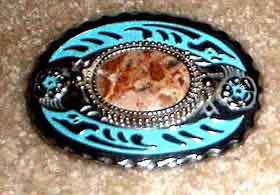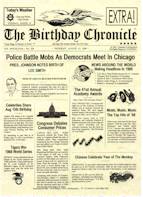
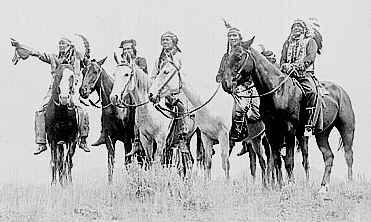
Welcome to Len Kubiak's Texas History Series

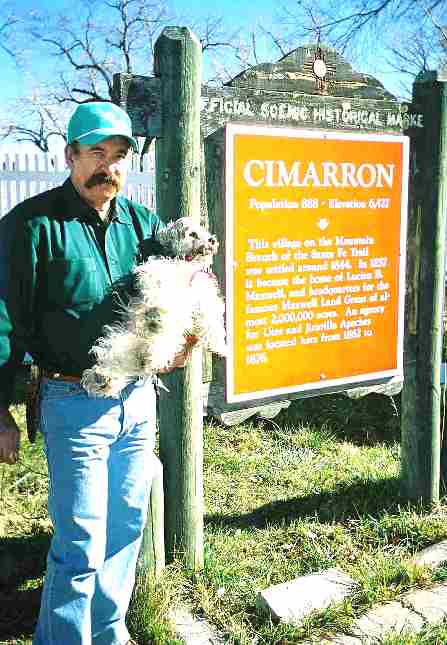
Texas historian Len Kubiak of Rockdale Texas.
HISTORY OF MINERVA, MILAM COUNTY, TEXAS
This webpage contains the history of Minerva Texas and provides biographies and photos of the Minerva community
It also contains a Minerva Bulletin Board which I'll use to post inquiries and additional information about Minerva.
This is a work in progress! Please send your stories and old photos and I'll add them to the website.

EARLY HISTORY OF THE MINERVA REGION
The area midway between present day Cameron and Rockdale has a rich history dating back thousands of years when it was inhabited by bands of roving hunters called the paleo people somewhere about 12,000 and 15,000 B.C.. Many of these early hunters crossed over from the frozen regions of what is now Siberia over a land bridge across the shallow sea that separated the two continents. Others travelled by boats from Europe (clovis points have been found in France). These ice age hunting bands were following the herds of wooly mammouth and bison. Over time, some of the paleo hunters settled down in the central Texas region and became part of a hunter and gatherer civilization much as our ancesters did in Europe. By the Woodland period (started about 900 A.D.,) the local inhabitants were using bows and arrows and herds of buffalo and elk roamed the grassylands along the Brazos valley. Life was good for the Native Americans.
By the 1500's, the area between the Colorado River and the Brazos River
was home to some 20,000 native americans known as Tonkawas. The Tonkawas were successful hunters and masters of working flint into all kinds of tools including Spearpoints, arrowheads, knives, tomahawks, scrappers, azes, and more. They traded for agriculture products with their neighbors to the east, the Caddeos and Cherrokees.

HISTORIC ERA
Spain claimed the land that is now Texas in 1519, when the explorer Alonzo Alvarez de Pi�eda sailed along the Gulf Coast to the Rio Grande. Later, other Spanish explorers came to Texas looking for gold without success. The arrival of Europeans to the central Texas area in the 1500's had a devastating effect on the Native Americans living in the region.
Small Pox, measles and influenza killed over 80% of the population estimated to be around 25 million in the 1500's. This eliminated the power of the native dwellers to protect themselves against the onslaught of the Europeans who came in ever increasing numbers.
Comanches Claim the western half of Texas
By the late 1700's, the Comanches (Southern Shashonies)began
moving into Texas from the northwest region of Wyoming known as the Wind river Range. The Comanches (which translates to "dreaded enemy")
became the dominant Native American force in the Texas until their defeat at the
battle of Palo Dura Canyon near present day Amarillo in the 1870's. The
Comanches were superb horsemen and could shoot arrows from underneath their
steeds while riding at full speed.
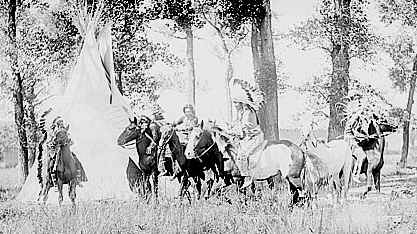
With the arrival of the Comanches, the Apaches were driven south out of the Panhandle and joined forces with the Tonkawas for survival.
TEXAS OPENED UP FOR SETTLEMENT (1820)
In 1820, Spain formally opened Texas up to foreign settlement. Moses Austin was the first American to take advantage of this opportunity.
In January 1821, Moses Austin proposed to bring 300 Anglo American families to Texas. The notion of a colonizer or empresario had existed in Spanish settlement laws dating from 1573. A colonizer was empowered to settle a region in return for governing powers over the colony. It also gave the colonizer four square leagues of land for every 30 families he settled.
Towns were to be set out in a grid pattern. Each family who settled in the colony would receive a town lot for a house, farmland, pasture land and certain tax exemptions. Colonists were required to settle on the land and use it before being allowed to sell it. Under the terms of Moses Austin's proposal, colonists were to become loyal subjects of the Spanish king and promised to obey Spanish laws and adhere to the Roman Catholic faith. Many Americans were eager to settle in Texas under these conditions. In turn, Spain hoped that Americans "of good character" who received generous portions of land would be loyal and prevent a takeover of Texas by their countrymen.
Spain had claimed Texas since 1519 and had controlled it since permanent occupation in 1716. But the king had never made its extensive settlement a primary concern. Instead, Spain concentrated on maintaining hold over the area. Preventing foreign encroachment upon Texas by France and the United States was important because Texas served as a protective borderland of New Spain (Mexico). Partly for this reason and partly because of the destruction caused by the Mexican War of Independence, there were only three Spanish settlements in Texas at Mexican independence in 1821. These settlements were located at La Bah�a (Goliad), San Antonio and Nacogdoches. Only 5,000 Spanish subjects lived in Texas; of these, 1,000 were soldiers.
In the early 1800's, Spain ruled a territory that included all of present-day Mexico northward to Colorado and westward to present-day California. To increase its hold on the land, Spain was eager to attract settlers to the area.
1822 MOSES AUSTIN GRANTED APPROVAL FOR 300 FAMILIES TO SETTLE IN TEXAS
In 1822, Texas was opened to Anglo-American colonization when the government of Spain granted Moses Austin permission to bring in three hundred families from the United States. He died while planning his enterprise, and his son, Stephen F. Austin, replaced him as contractor or empresario.
Then Mexico gained her independence from Spain, and her newly elected emperor, Iturbide, confirmed Austin's contract.
General Santa Anna overthrew Iturbide, and a federal republic was established with Coahuila and Texas joined together as a state.
Their legislature in 1825 passed a general colonization law under which Austin and several other empresarios were given contracts to settle additional families from the United States in designated territorial grants.
ROBERTSON'S COLONY (1834-1835)
The decree of May 22, 1834, awarding the colony to Robertson confirmed the boundaries as they had been defined in the Nashville Company's contract of October 15, 1827. Beginning at the point where the road from B�xar (San Antonio) to Nacogdoches, known as "the Upper Road," crossed the Navasota River, a line was to be run along that road on a westerly course, to the heights which divided the waters of the Brazos and Colorado Rivers; thence on a northwest course along that watershed to the northernmost headwaters of the San Andr�s River (Little River), and from the said headwaters, northeast on a straight line, to the belt of oaks extending on the east side of the Brazos, north from the Hueco (Waco) Village, known as the "Monte Grande" ("Great Forest"), and in English as "the Cross Timbers," and from the point where that line intersected the Cross Timbers, on a southeast course along the heights between the Brazos and Trinity rivers, to the headwaters of the Navasota, and thence down the Navasota, on its righthand or west bank, to the point of beginning. That included all or part of the 17 counties listed above, under Leftwich's Grant, plus the 13 additional counties shown under the Nashville Colony, constituting an area 100 miles wide, beginning at the San Antonio- Nacogdoches Road and extending northwest up the Brazos for 200 miles, centering around Waco.
In that 1834 session of the legislature, Robertson was recognized as the empresario of the colony, and he was to introduce the rest of the 800 families into the colony before April 29, 1838. Each family that dedicated itself solely to farming was to receive one LABOR (177.1 acres) of land; those who also engaged in ranching were to receive an additional SITIO (1 league, or 4,428.4 acres) . Single men were to receive 1/4 league (1,107.1 acres). For each 100 families introduced, Robertson was to receive 5 leagues and 5 labors (or a total of 23,027.5 acres) of premium lands. William H. Steele was appointed Land Commissioner of the Nashville (or Robertson) Colony on May 24, 1834, and he appointed John Goodloe Warren Pierson as Principal Surveyor, on September 17, 1834.
The capital of the colony was laid out at the Falls of the Brazos (about 6 miles northwest of the Reagan area and named Sarahville de Viesca: "Sarah" for Empresario Robertson's mother, Sarah (Maclin) Robertson, who had loaned him the money for the project, and "Viesca" for Agust�n Viesca, the Mexican official who was presiding over the state legislature when it granted the contract to Robertson. All the Robertson Colony land grants were issued in Viesca, Texas.
The first land title was issued on October 20, 1834, but all the colonial land offices were closed, by the Provisional Government of Texas, on November 13, 1835, because of the outbreak of the Texas Revolution, thus preventing Robertson from completing the full quota of 800 families. However, according to a ruling handed down by the Supreme Court of the State of Texas, in December of 1847, Robertson was given credit for having introduced a total of 600 families.
Following the Texas Revolution, the Robertson Colony area was broken up to form all or part of the thirty present-day Texas counties which have been listed under Leftwich's Grant and the Nashville Colony.
RAILROADS BRING GROWTH TO MILAM COUNTYWith the westward expansion of the International & Great Northern Railroad from Tyler to Austin, towns such as Bremond, Reagan, Hearne, Milano, Rockdale and Taylor were founded.
MIDWAY FOUNDED 1870
Midway was a small village that sprang up between Rockdale and Cameron in the early 1870's. Midway had a Church of Christ, a school, and a few houses but no stores. The people had to go to Rockdale or Cameron to purchase their supplies.

US History Class at Midway School in 1902. The first public school in the area was the Midway School built in 1884. This school consisted of two rooms and was known as the Milam County School District #33. Photo curtesy Claire Freeman of Mercedes, Texas. Pictured in the above photograph is Claire's step-grandmother at the age of 17.
MINERVA FOUNDED 1892
About 1891, the San Antonio and Aransas Pass Railway company from San Antonio began construction of a railroad from Waco to Yoakum. Mrs. Minerva Sanders sold this company the right-of-way through her property to induce the bringing of the railroad through this area. When they wanted to survey a town site there, Minerva donated thirty acres of land for building a town requesting that the San Antonio and Aransas Pass Railroad maintain a depot and an agent there for fifty years. In appreciation for her gift, the railroad company named the town Minerva in her honor.
The Minerva post office opened in 1892. The first postmaster was David Robinson who served from 1915 to 1949.
Mrs. Minerva Sanders gave the land for the Minerva Methodist Church, also. According to Mrs. lda Jo Marshall, the first pastor of this church was Reverend S. P. Brown and the first Sunday School superintendent was Mr. W. O. Cone. The first wedding in this church was that of Mr. John C. Wallace and Miss Willie B. Cone.
During the eighty active years of the Minerva Methodist Church, it was the center of the religious and social activities until it was closed on March 2, 1969. This is evidenced by former residents who return to visit the Annual Homecoming each year since it was started on October 7, 1961.
Minerva became a larger village than Midway, but it was still small. The town then consisted of a drug store, a few grocery stores, a post office, Methodist Church, Church of Christ, and the Baptist Church. The first postmaster was Dr. Harber who was also a doctor. Mrs. Mason (Bernice) Longmire was the last post mistress. The post office closed Octobet 13, 1972.

The Minerva School was built in 1913 and operated until 1949 when the Rockdale, Minerva and Cameron Schools were consolidated. The Milam County School Board annexed one-half of the Minerva School, south of Cooper Hollow to the Rockdale School on July 6, 1949. The school building was donated to the Minerva community as a social center (Minerva Community Center).
A prominent citizen of Minerva was W. Frank Hubert who was one of the few surviving early day settlers of Rockdale. He was born at Nacogdoches, but came as a young man to this section of Milam County and soon after the founding of Rockdale, he opened a hardware and saddle business. He was the last surviving member of the old Rockdale Social Club, organized by a group of bachelors in 1874, the year Rockdale was established.
Frank Hubert married Miss Minerva Sanders, whose grandfather came to Milam County in 1853 and for whom the town of Minerva was named. He had engaged in the farming industry at Minerva for many years and was known for his fine grape vineyards.
According to Joy Graham of Rockdale, the Minerva oil boom began with the W. P. Henry well on July 26, 1921 which began producing 25 barrels of oil per day.
By December the yield was two hundred barrels daily. Oil was not in demand at that time and much of the oil was stored or shipped out in rail cars. Owens Refinery of Ardmore, Oklahoma, began negotiations for constructing a refinery at Minerva. Jan.15, 1922, the refinery, with a 2,000-barrel capacity, opened.
For the next 23 years Owens Refinery sold at a steady market. By 1928 the oil field had seven hundred producers.
However Minerva's main economy was agricultural driven. In 1959, Minerva lost its rail service, when the Texas and New Orleans abandoned the section of track between Cameron and Giddings. The Minerva post office was discontinued in the mid-1960s.
Two churches and three businesses continued to mark the community of Minerva in the 1980s, when the population was reported as low as sixty.
Today Minerva has gone back to a very small village. Students are attending Rockdale Schools by bus. The last time the train went through the Minerva station was August 13, 1949.

Photo of the Minerva/Midway Cemetery established in 1885 near Minerva Texas.
BIBLIOGRAPHY: Lelia M. Batte, History of Milam County, Texas (San Antonio: Naylor, 1956). Margaret Eleanor Lengert, The History of Milam County (M.A. thesis, University of Texas, 1949). Milam County Heritage and Preservation Society, Matchless Milam: History of Milam County (Dallas: Taylor, 1984).


RELATED MINERVA LINKS

Tanglewood Home Page
History of Milam County
MINERVA BULLETIN BOARD |











 Our email address is:
lenkubiak.geo@yahoo.com">For questions or comments, send me an Email.
Our email address is:
lenkubiak.geo@yahoo.com">For questions or comments, send me an Email.





